How to Unwrite Protect a Usb Drive Windows 10
Nowadays, most of us have one or more USB flash drives, which are usually used to store and transfer data among computers, create Windows To Go workspace, install and run portable applications, connect to a wireless network, and backup files. Some users who often use USB drives may have come across the following error messages.
▪ Error during formatting USB: "When I format my USB pen drive, it shows the error message - The disk is write protected. I have tried various methods to solve this but all are not working. There is no write protection switch on it. It is a SanDisk Cruzer Edge 8GB USB. I am using Windows 7. Please give me solution to fix it."
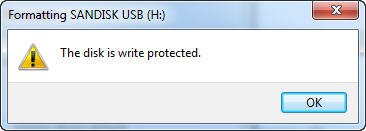
▪ Error during copying file to USB: "While trying to transfer files from my Windows 10 PC to a Kingston DataTraveler 32GB USB flash drive, I received an error message - The Disk is write-protected. Remove the write-protection or use another disk. Now I can neither copy files to the USB drive nor create new files from the USB drive. The PC is upgraded from Windows 8.1. How do I disable the write protection?"
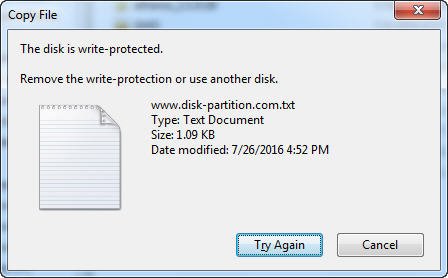
What is write protection on USB?
Write protection (also called read-only) can be physical or virtual. A USB drive is enabled with write protection has the ability to prevent new files from being written or old files being changed. Typically, this means you can only read the data which are already stored on the USB, but you can't delete or modify them. By using write protection, you can make ensure data is not accidentally overwritten or erased.
How to remove write protection from USB drive effectively?
If you are reading this post, you must be one of them. Deep breath and stay calm. No matter whether you are using Windows 7, Windows 8 or Windows 10, I am going to walk you through a few easy steps to remove write protection and make your USB flash drive or SD card writable again.
Step 1. Check the write protection switch if available
Some USB flash drives have a physical switch which allows you to lock or unlock write protection. The location of a switch on a USB flash drive will be different. Make sure the lock switch is slid up to unlock position. You will not be able to transfer files to the USB drive if it is locked.
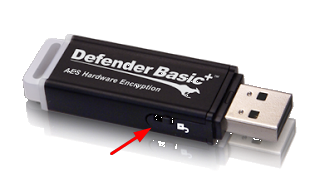
If the write protection switch on your USB drive is off and you still get the error message or there is no physical switch on your USB drive, please skip to Step 2.
Step 2. Clear read-only attributes with DiskPart utility
2.1. Press Windows key + R combination on your keyboard. In the pop-up Run dialog box, type diskpart and hit Enter or click "OK" to open the DiskPart Command Prompt.
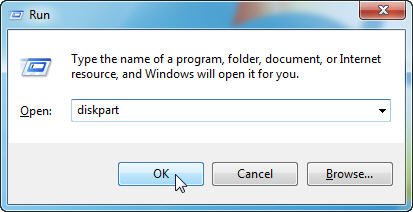
2.2. Type the following commands one by one and hit Enter after each:
▪ list disk - all of the disks connected to the computer will be displayed, including internal hard drives.
▪ select disk n - where n is the number of USB flash drive. You can use the Size column to identify which one it is.
▪ attributes disk clear readonly - change your USB's properties so that it is no longer read-only.
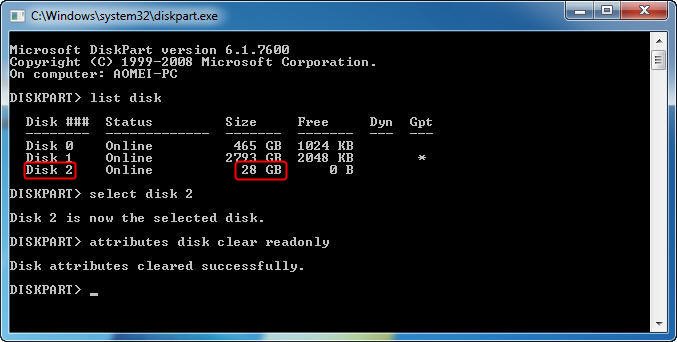
2.3. Close DiskPart Command Prompt and re-plug your USB flash drive to check if the write protection error is resolved. If not, please try the next step.
Step 3. remove write protection through editting the registry
3.1. Press Windows key + R combination on your keyboard. In the pop-up Run dialog box, type regedit and hit Enter or click "OK" to open the Registry Editor.
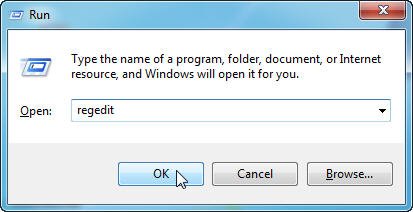
3.2. Expand the entries on the left-hand pane to navigate to the following path:
HKEY_LOCAL_MACHINE\SYSTEM\CurrentControlSet\Control\StorageDevicePolicies
3.3. On the right-hand pane, double-click on the WriteProtect or right click on it and select "Modify". In the pop-up window, you may find that the "Value data" is set to 1 which means current computer is enabled with write protection on USB storage device. To disable it, you need to change the value from 1 to 0 and click OK to apply the change.
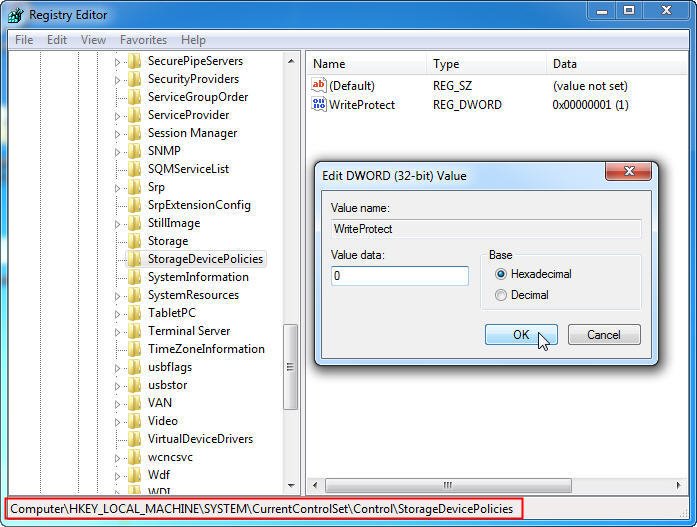
3.4. Close Regedit Editor and connect your USB drive to the computer again, and you should find the USB write protection has been removed. If not, please follow the Step 4.
Tips of Step 3:
▪ If there is not a "StorageDevicePolicies" folderunder the "Control" folder, you can right click "Control" folder and choose "New" -> "Key". Name it with StorageDevicePolicies and then open it.
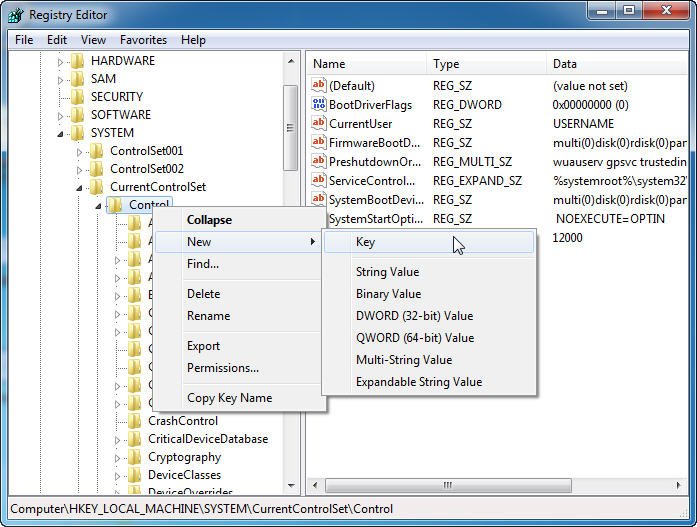
▪ Right-click on the white space at the right-hand pane and choose "New" -> "DWORD (32-bit) value". Name it with WriteProtect. And then, double-click on it to check if the Value data is set to 0.
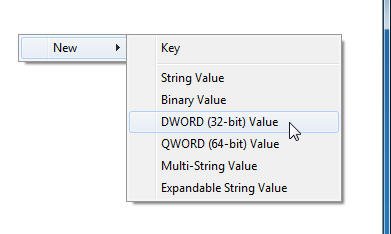
Step 4. Format write-protected USB drive with free partition manager
If you've tried all steps above and still can't remove write protection from USB drive, the reason might be corrupted file system. To settle out it, you can try to format the USB drive. The problem is how to format a write-protection USB?
AOMEI Partition Assistant Standard is a free partition manager software and disk management tool for computers running 32-bit or 64-bit versions of Windows 11, Windows 10, Windows 8.1/8, Windows 7, Vista and XP. It supports all types of disk, including mechanical hard drive, SSD, SSHD, external hard drive, USB flash drive, SD card, etc. It enables you to format a USB drive easily and quickly.
To enjoy more advanced features, such as recover lost partition, clone GPT system disk, convert dynamic disk into basic, etc., you can upgrade it to Professional version.
Note: Formatting a USB will delete all data on it. Therefore, make sure that you backup all the data from USB drive to your computer.
4.1. Free download, install and launch AOMEI Partition Assistant Standard. Right click on the USB partition and select "Format Partition".
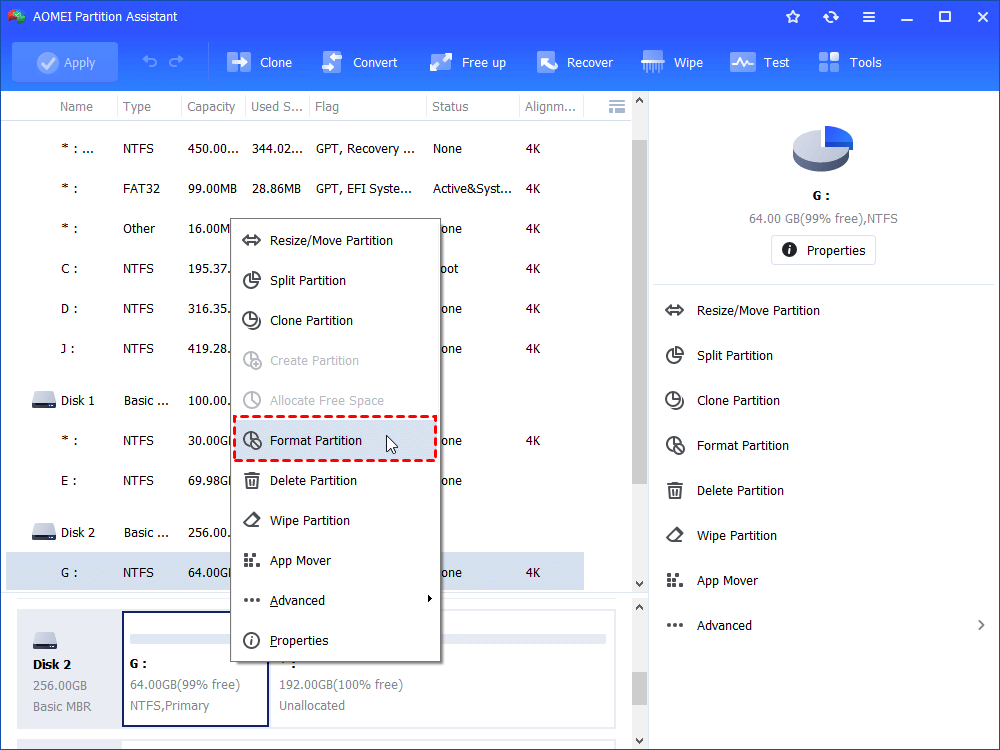
4.2. In the pop-up window, you can name the USB drive by editting "Partition Label" and change file system. By default, a USB drive is formatted as FAT32, which ensures cross-platform compatibility. However, FAT32 limits a single file size up to 4GB. If you would like to store larger files on your USB flash drive, you should format it to NTFS. And then, click "OK" to continue.
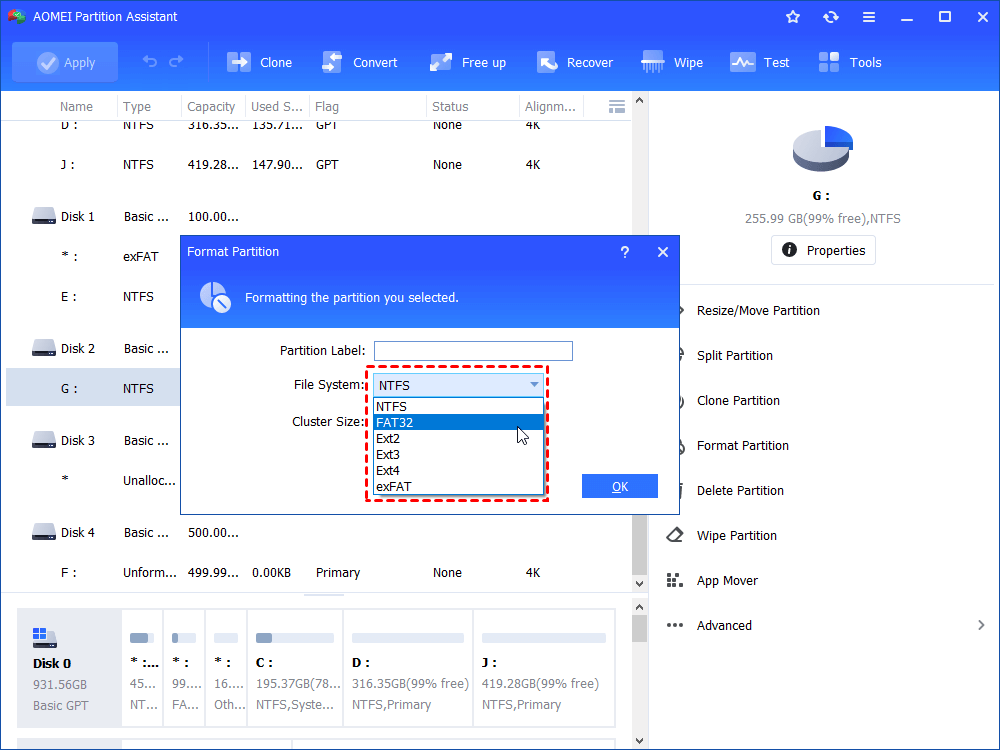
4.3. Your USB has not been formatted yet. To save the change, you need to click "Apply".
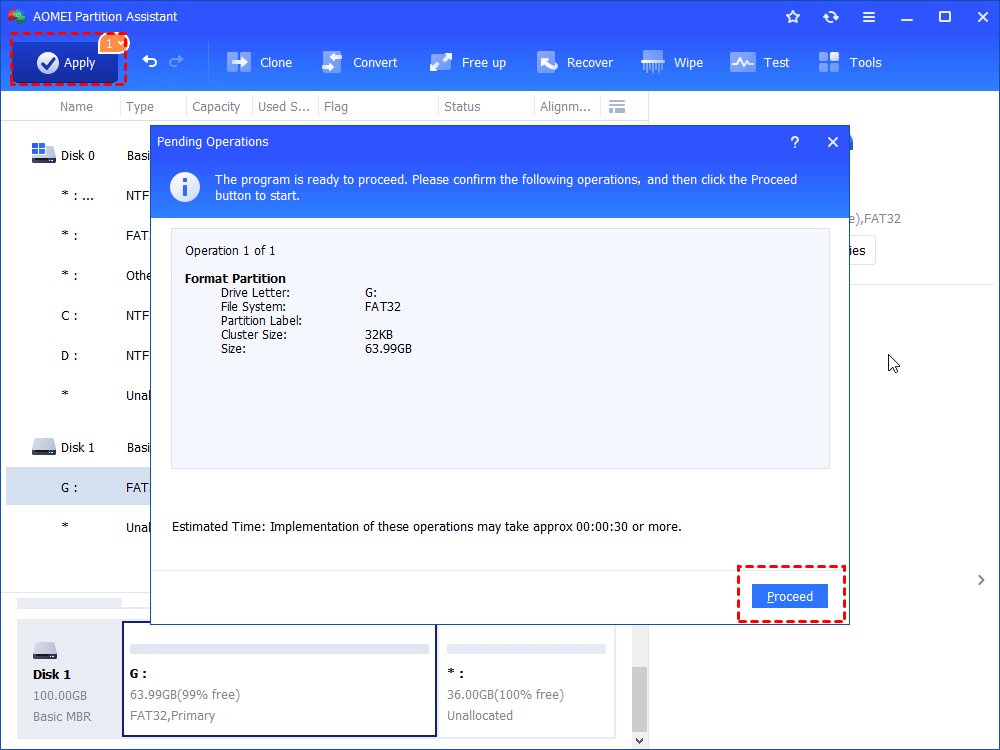
The formatting progress shouldn't take too much time. Of course, the more data on the USB, the more time the formatting will take. If there is no physical damage or bad sectors with the USB drive, it will be formatted, cleaned and writeable.
Since the reasons for write protection USB are different, some step may fail to remove write protection from USB drive. If so, please skip the step to try next step. All the steps apply to remove write protection from SD card.
Tips: Besides USB flash drive, the popular cloud drive is also a good choice for data storage, like Google Drive, OneDrive and Dropbox. Being troubled to manage the multiple cloud drives? There is a free multi clouds manager – MultCloud which can help with that, such as directly transfer files from Google Drive to OneDrive.
How to Unwrite Protect a Usb Drive Windows 10
Source: https://www.diskpart.com/articles/remove-write-protection-from-usb-1203.html
0 Response to "How to Unwrite Protect a Usb Drive Windows 10"
Post a Comment